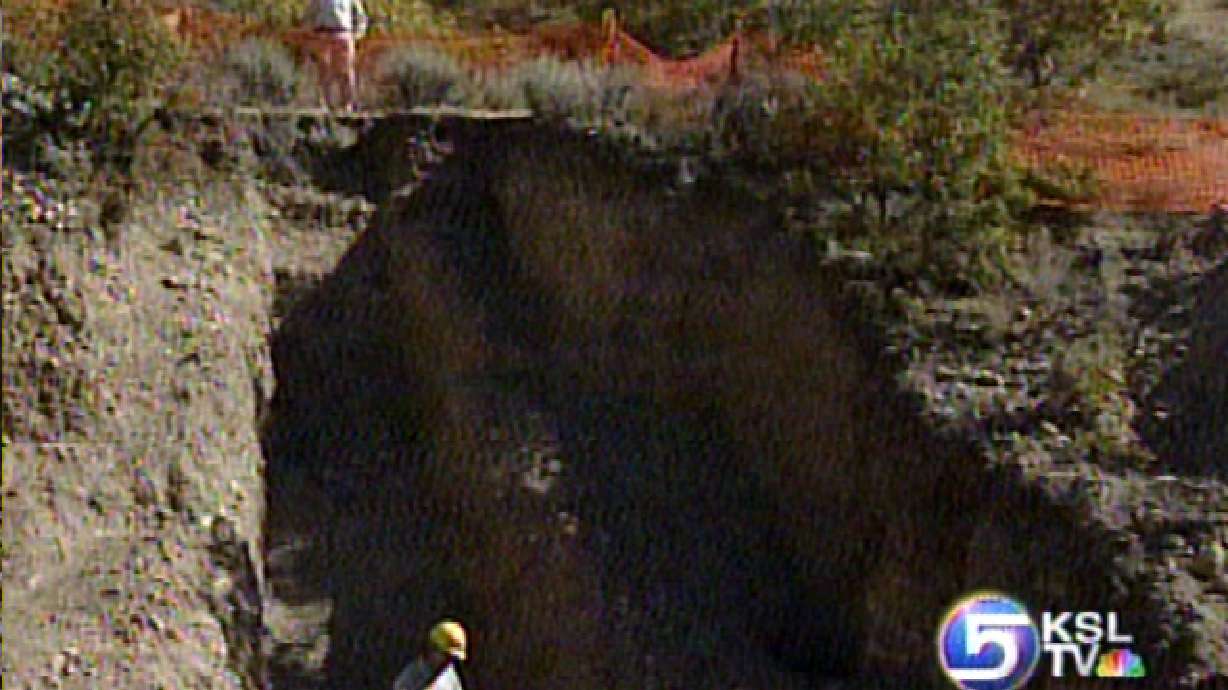Estimated read time: 2-3 minutes
This archived news story is available only for your personal, non-commercial use. Information in the story may be outdated or superseded by additional information. Reading or replaying the story in its archived form does not constitute a republication of the story.
Ed Yeates reporting A diary of another big earthquake has been uncovered, this time inside a trench that cuts through our infamous Wasatch Fault - at its southern tip.
Things look pretty peaceful and quiet in the hills east of Santaquin. But a trench along the Wasatch Fault documents that nature at one time got very, very angry"
#2
Chris DuRoss, Utah Geological Survey: "Evidence for one large displacement event - an earthquake that would be associated with magnitude seven"
The Utah Geological Survey has been trenching the Fault for several years now trying to get a picture of when it sleeps and how often it wakes - violently!
So again, in this latest trench..
Chris DuRoss, Utah Geological Survey: "And we know from our work here that the most recent event - earthquake on the Wasatch fault on this segment, the Nephi segment occurred in this location"
The 220 mile Fault, running along the base of the Wasatch Range, from the southern tip of Idaho - through the heaviest populated areas of Utah, past Santaquin - is one of the longest vertical faults in the country.

It can break up anywhere along ten segments, each about 20 to 30 miles in length.
What they're learning from all these digs, could pay off in the construction of new buildings.
Gary Christenson, Utah Geological Survey: "They update the building code every three years. This may have an influence on the 2009 version of the building code."
All these diaries just keep reinforcing the projections. The Wasatch Fault wakes up rather consistently somewhere along at least five major segments about every 350 years. It's been 500 to 600 years since the last big one. So, we're overdue.
Gary Christenson, Utah Geological Survey: "the way we like to say it is we could expect one at any time"
Utah's trenching project is funded through a grant from the United States Geological Survey's National Earthquake Hazards Reduction Program.








